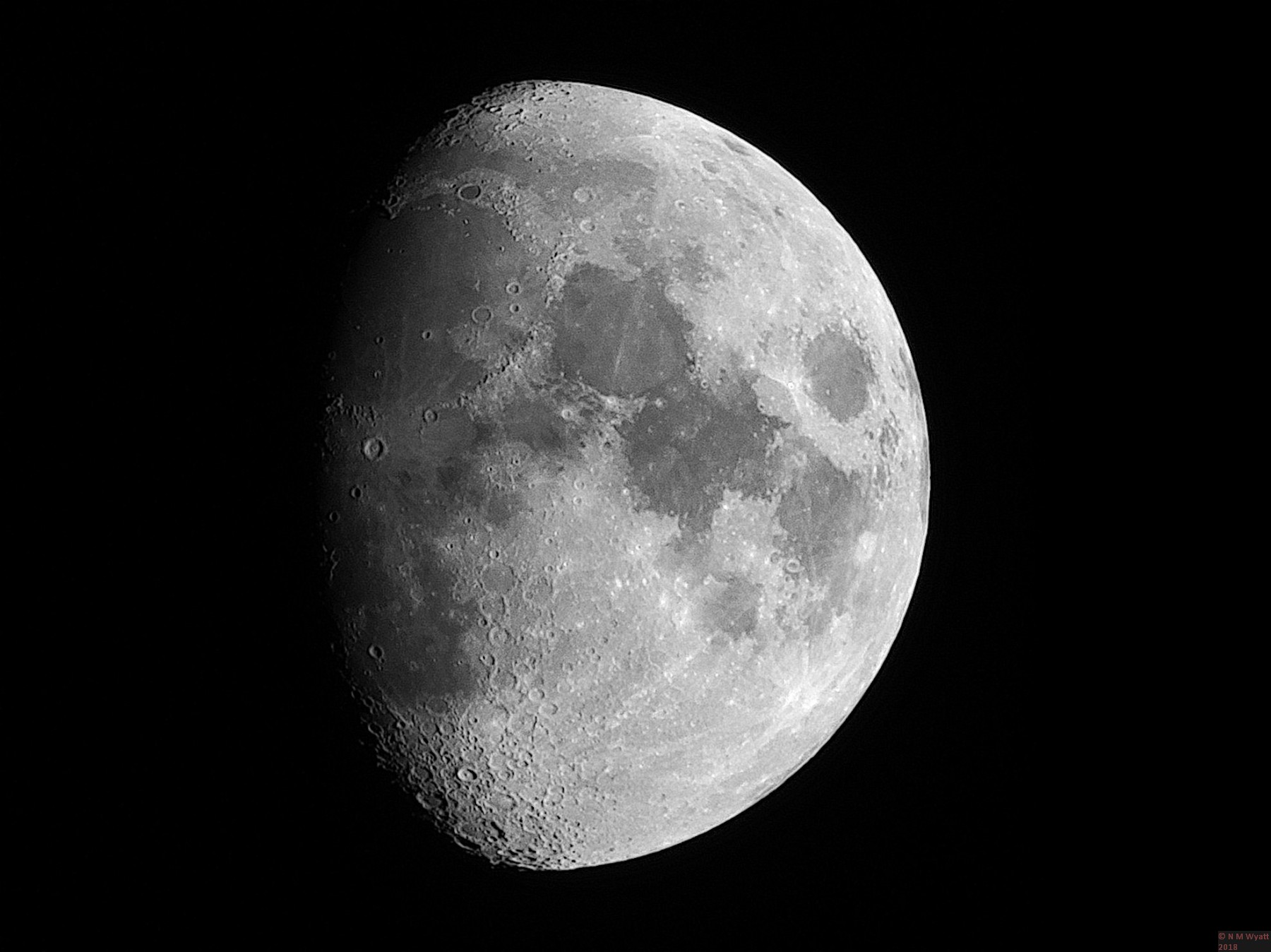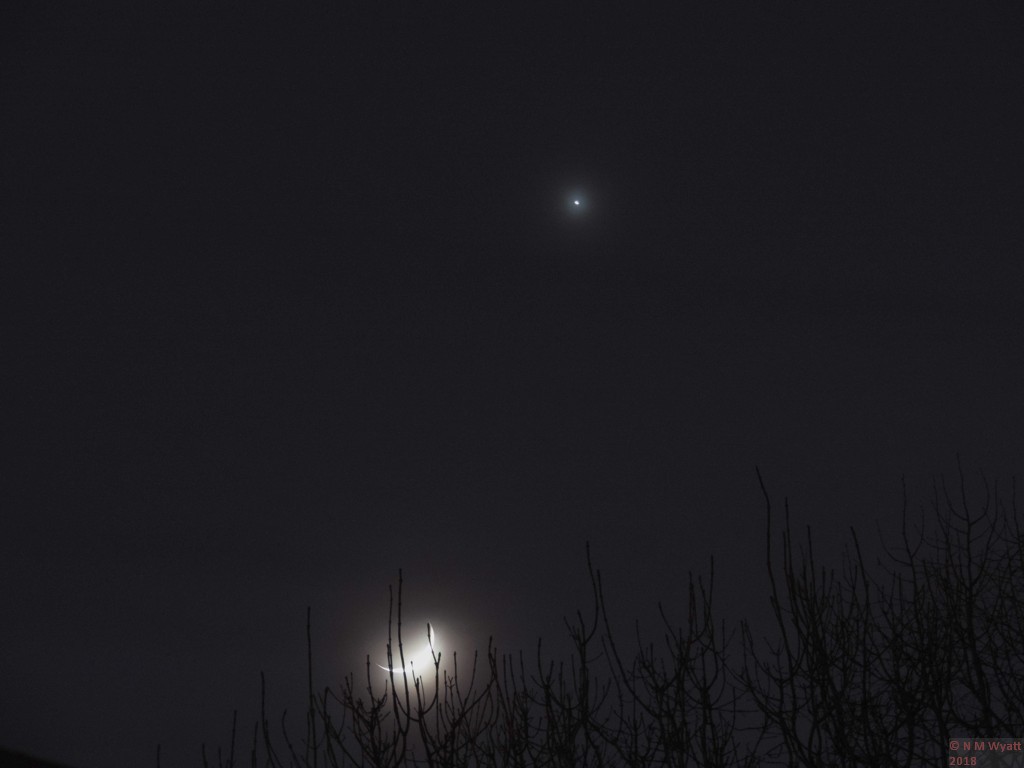If you find this website useful, please check out my books or visit my Amazon Author page. Or even Buy Me a Coffee!
Astronomy
Astrophotography
You are never too old to learn, and one of the thing that has opened my eyes has been discovering the quality of astronomical images that can be produced by amateurs with very modest equipment. By using digital cameras and image processing software it's a realistic ambition to produce images that compare favourably with those produced by the world's biggest telescopes fifty years ago - right in your back yard!
This website does not showcase the best astronomical pictures on the internet! It's a selection of pictures I have taken myself with basic equipment and free software. Producing images like these below, or even better ones, is within your reach!
Most importantly, you don't have to spend a fortune. My first serious scope, mount and tripod cost £180 on Ebay. I spent £40 on a more solid tripod, and about £200 on various bits and pieces including books and an ancient Canon EOS DSLR and a seconhand Microsoft HD Webcam. The results shown before are some of my best so far, and will be updated from time to time.
Perhaps the easiest target in the sky is the moon. You can get good pictures with any long or zoom lens, this is a 'stack' of six pictures taken with an ordinary bridge camera:
A gibbous moon photographed on the isle of Skye.
Follow the links below for introductions to some of the other things you can image in the night sky:
A Conjunction of Moon and Venus
M65 is a spiral galaxy in the constellation of Leo, closely associated with two other galaxies M66 and NGC3628. Together these are known as the 'Leo Triplet' and they are actually relatively close to each other in space. Compared to M66, M65 is much yellower, as a consequence of containing mostly only older stars and having relatively little new star formation.
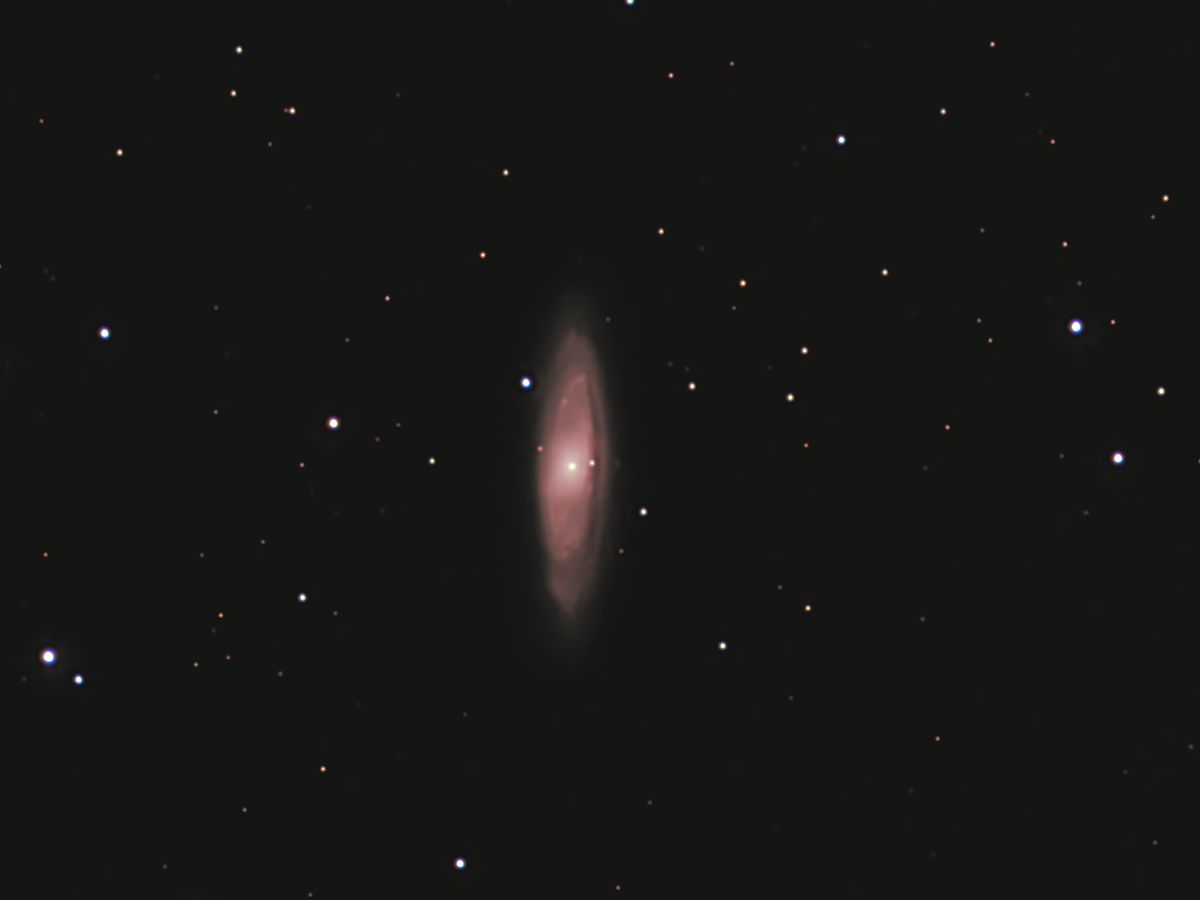
M65
- Details
- Category: Astrophotography
M56 is a rather faint globular cluster that is 13.7 billion years old in the constellation of Lyra.
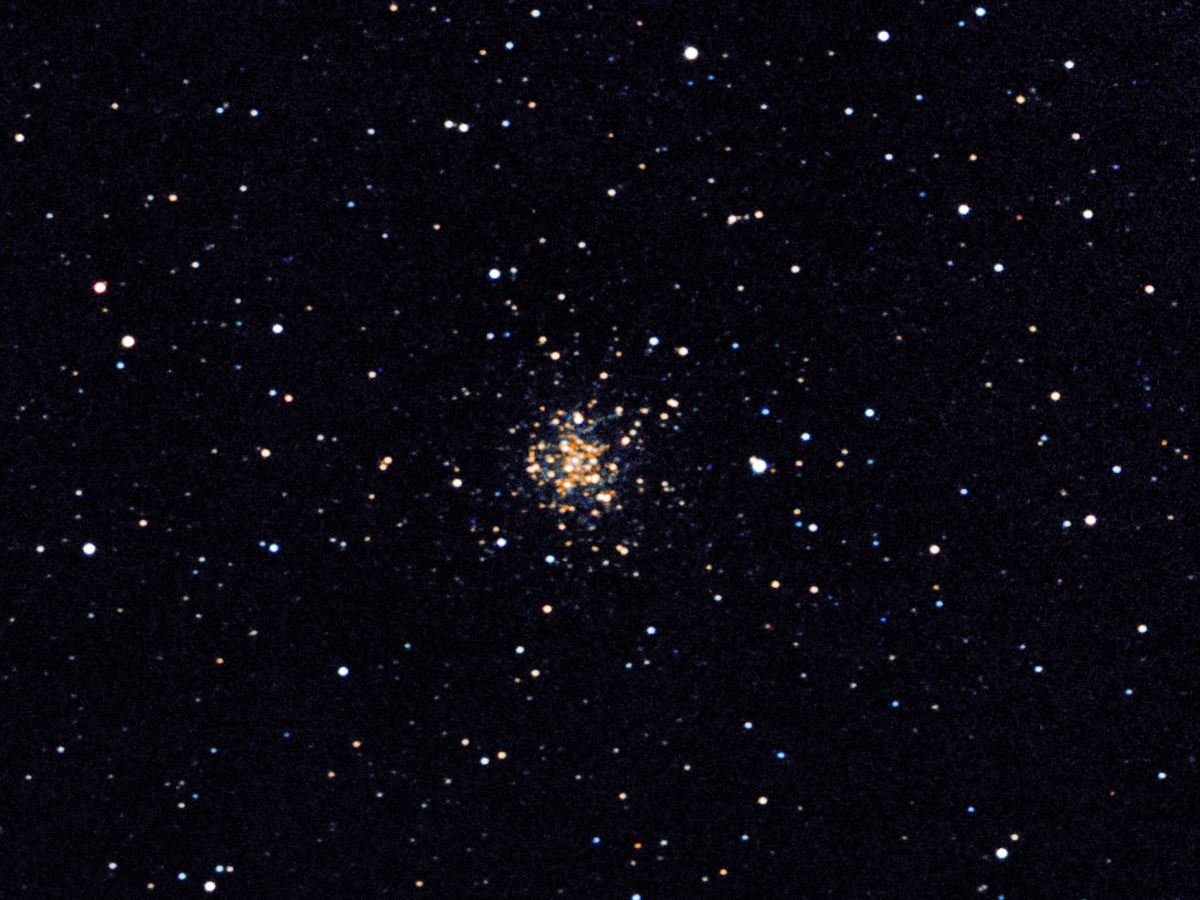
M56, the globular cluster in Lyra.
- Details
- Category: Astrophotography
M44, the Beehive Cluster is also known as Praesepe or 'the manger' as the two brightest stars near it are supposed to be donkeys having their lunch(!)
Just visible to the naked eye as a fuzzy patch in dark skies, through a telescope it is a rich area of jewel-like stars. Photographed it is less spectacular. It covers a large area about three times as wide as the full moon so it is best photographed or observed with a fairly short focal length.
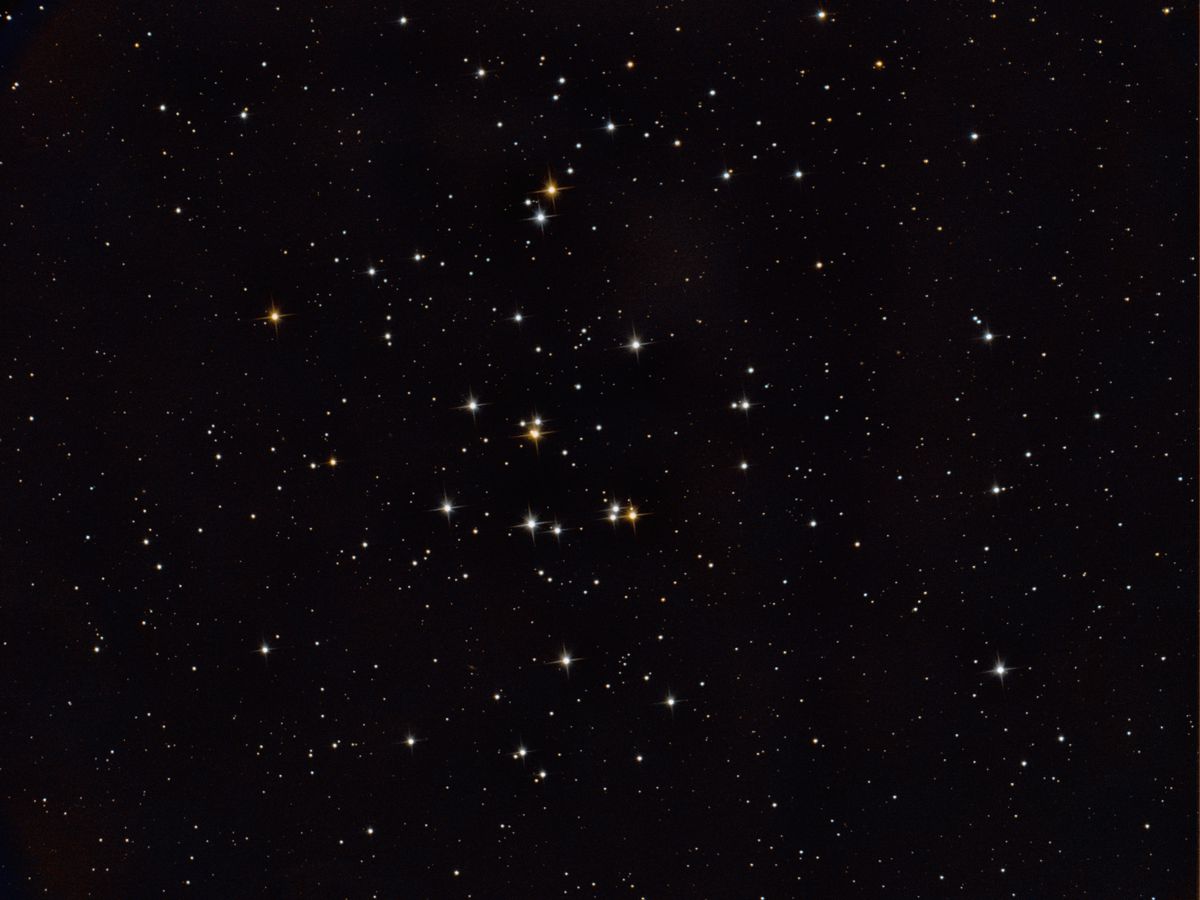
M44, The Beehive Cluster or Praesepe - best seen with the eye through a telescope, like many star clusters.
- Details
- Category: Astrophotography
M57 is a ring of gas expanding outwards after being thrown off by a red giant star, that now glows faintly as a white dwarf, visible in the centre of the ring.
It is easy to find in the constellation Lyra and can be seen through small telescopes.
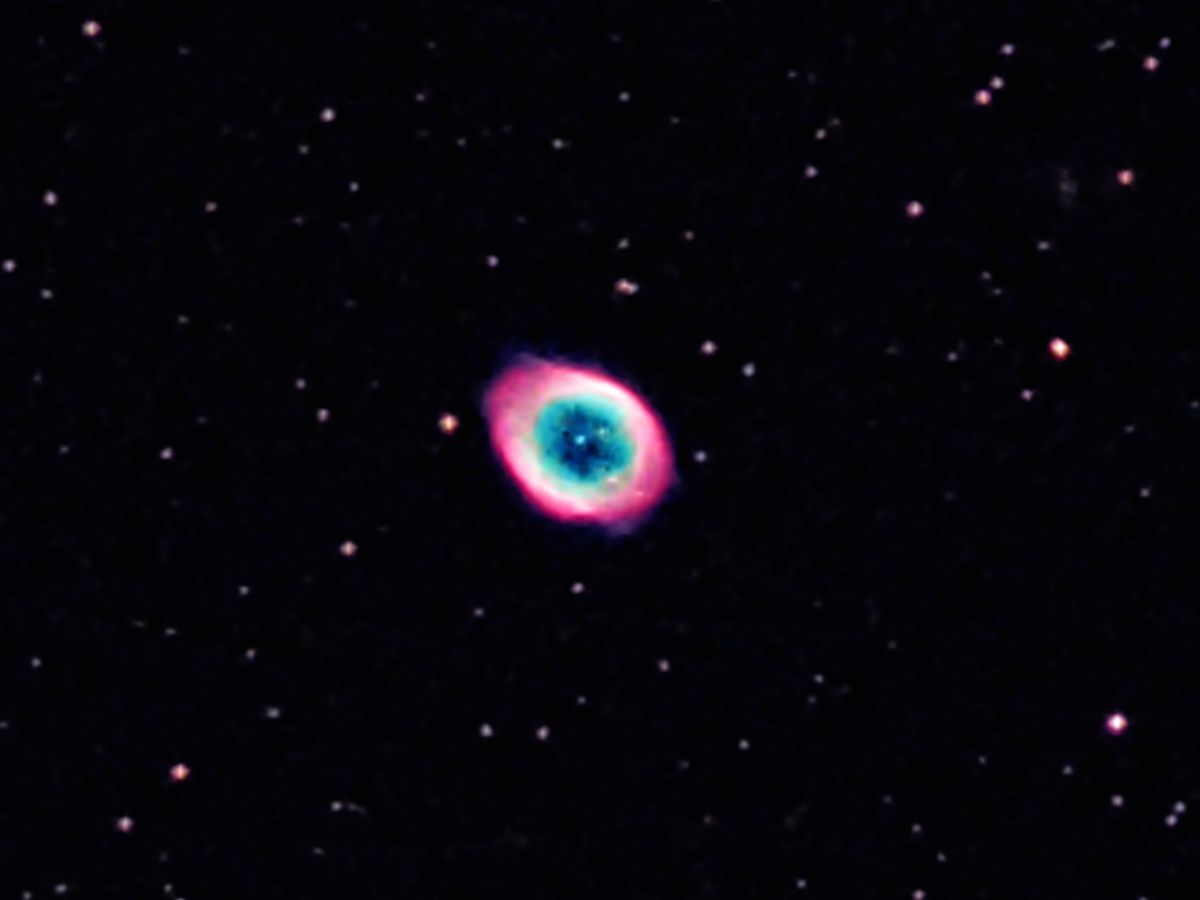
M57 the ring nebula - the central star is visible here.
- Details
- Category: Astrophotography
Updated!
Here's my 2016 effort, great colour, but still a bit noisy:
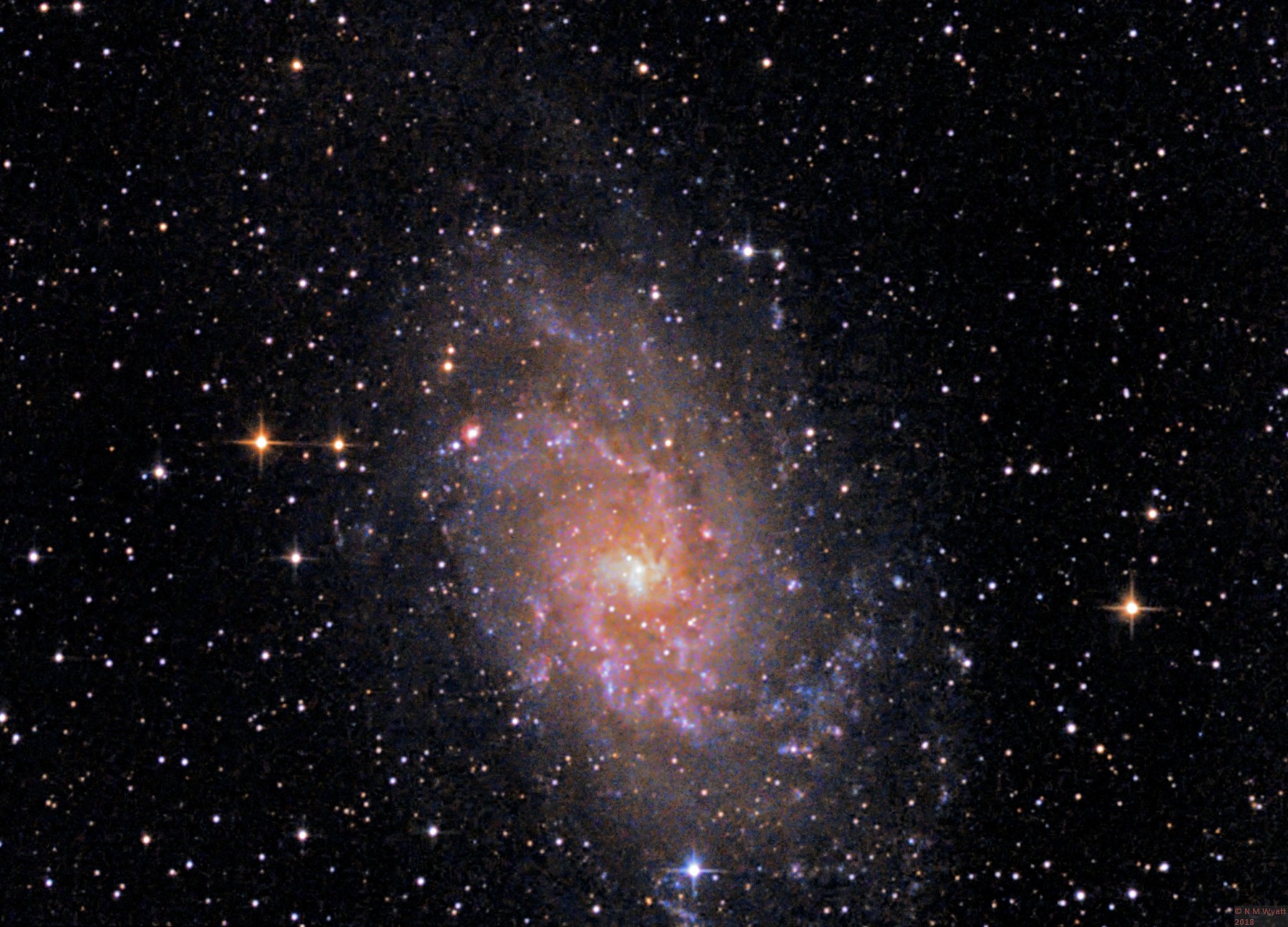
This was my first attempt at M33:
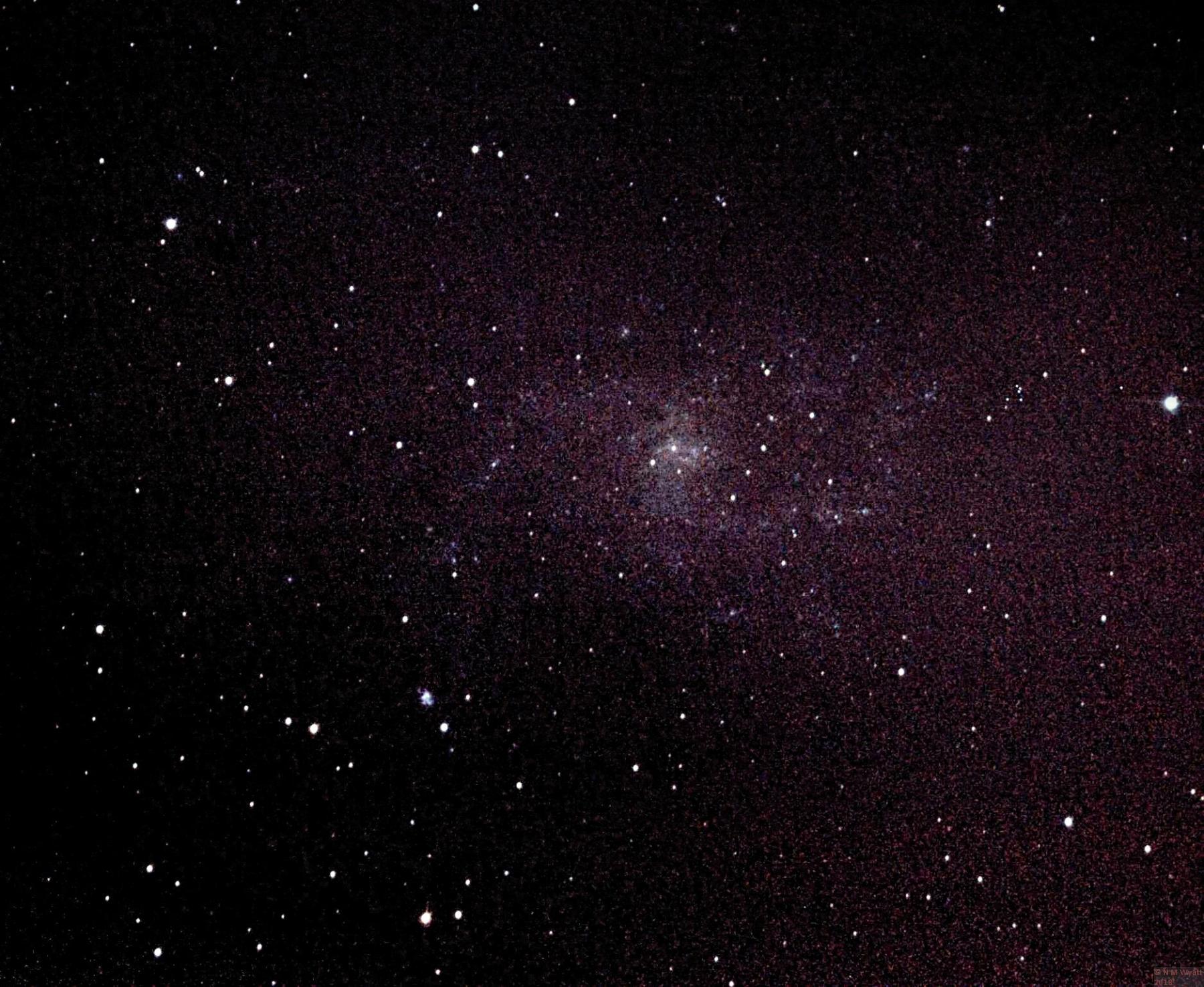
M33 - this target clearly needs a lot more effort :-(
- Details
- Category: Astrophotography
Page 15 of 23

